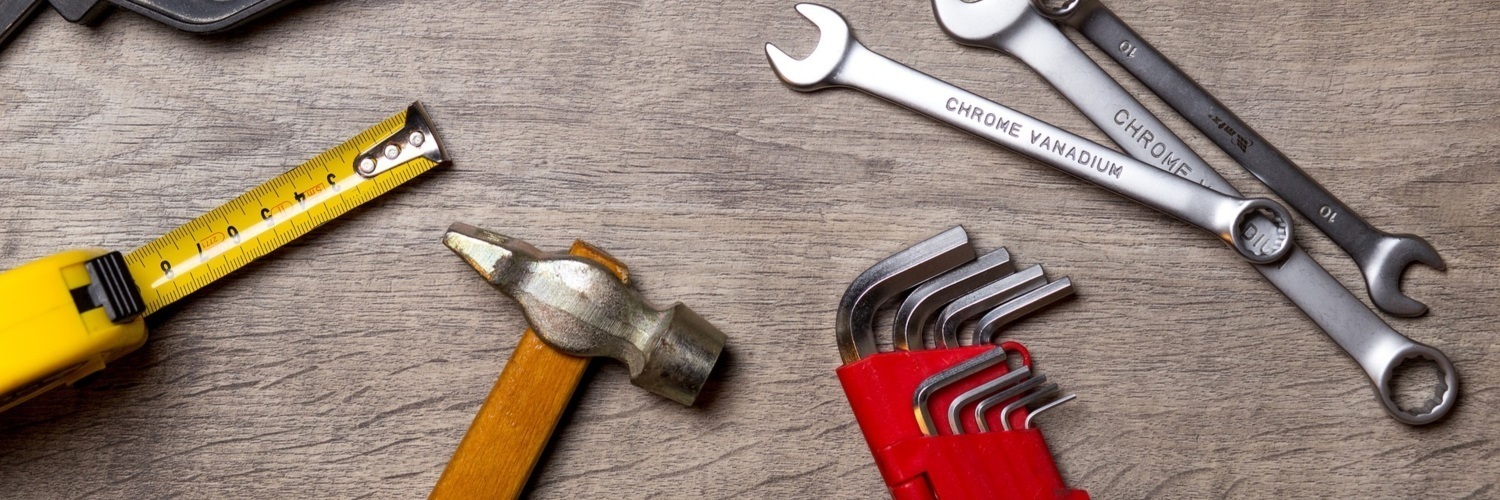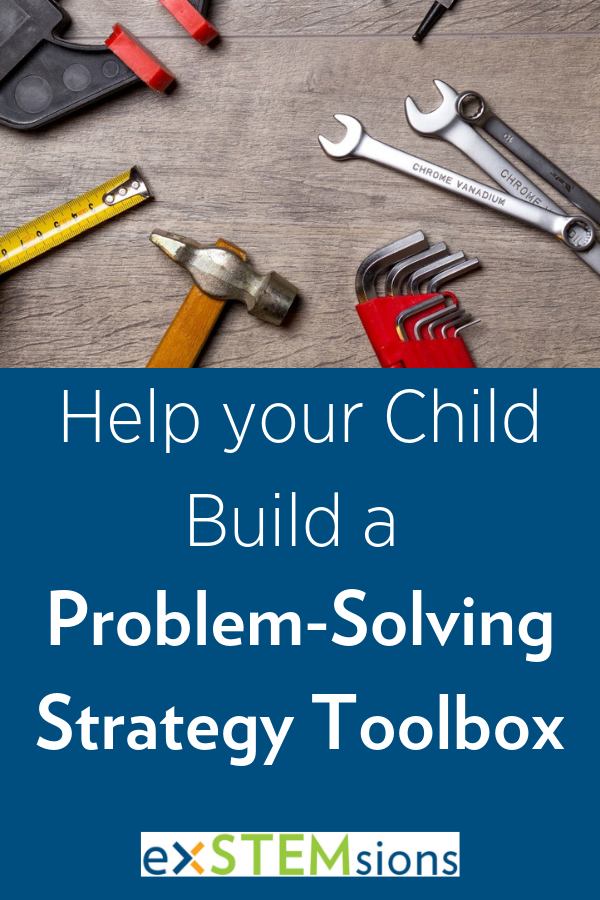Help your Child Build a Problem-Solving Strategy Toolbox

Good problem solvers have a toolbox of strategies
One of the most important sets of skills that your child will learn is how to be a good problem solver. There is no aspect of a child’s life where these skills won’t be helpful to have at their disposal. Kids who are good problem solvers are able to move more easily through their tasks at school, at home, and eventually in their future careers. Being a good problem solver even helps children socially as they try to navigate sticky situations that might come up when playing games, or building things with friends. There is no downside to being a strong problem solver.
Yes, we agree! Now what?
To be a good problem solver, one of the most important things your child must have is a full “toolbox”. This means that they have an understanding of a wide variety of different ways to solve problems, and have practiced each strategy enough that they have a decent idea of when they might be useful. Imagine it like the toolbox that is likely somewhere in your home. There are probably a whole bunch of different tools in there - some of them you use all the time, like a hammer or screwdriver, and others you use only occasionally, like a level, but each one is familiar enough that when a problem presents itself, you know which tools you want to grab first. The same idea holds for problem solving: your child needs access to all kinds of different tools and strategies, so that when a problem arises, they can reach into their toolbox and select the strategies that are most helpful for that problem.
So which tools should your child have in their toolbox? What follows are some of our favorites.
Strategy 1: Experimentation
Have a problem and aren’t sure where to start? Start anywhere! Maybe you employ a guess and check strategy: make a guess, see what happens, rethink the situation, make another guess, and continue. If not, that’s fine, but be sure and do something. Write down what you know, and what you don’t know. Play with the numbers with no real goal in mind, make bold predictions just to see if they pan out, ask questions you think are silly and don’t know the answer to. Even when you think that what you’re writing is wrong, just write it. Very often, you will find at least a little nugget of goodness in your seemingly random thinking, and that nugget will get you started on the path to a solution!
Strategy 2: Building a list or table
Constructing a list, table, or chart can be very useful in problems that have information flying around just begging to be organized. Whether you find yourself overwhelmed with data, or you have only a few things to make sense of, organizing details, numbers, and possibilities is an amazing tool. And while this strategy might be great just for your own sanity when you begin a problem, there is more value to it than that. Having information arranged in a systematic way can help to make patterns, sequences, outliers, and all kinds of interesting occurrences stand out, which can be half the battle in many types of problems.
Strategy 3: Working backwards
Working backwards is strategy that is very common for children to employ - and they should, it’s super useful. If you are trying to make your way through a maze, sometimes it helps to identify the endpoint and work your way back to the beginning. Now, as far as mazes are concerned, many would say that starting at the finish is “cheating.” Keep in mind mazes are different than most problems, in that the maze is already laid out for you, but in problem solving, you and your child are the ones laying out the path! You have the freedom to create that solution in any way you please. And when you know the answer to a problem and need to find the process that gets you there, playing with that conclusion is a great way to clarify thinking, and see patterns and ideas that might not be apparent otherwise.
Strategy 4: Drawing a picture or constructing a model
Sometimes when you’re solving a problem, it’s really helpful to have a picture. Many problems are just visual in nature, and are begging you to start drawing or building. Other problems are not so obviously visual, and it will be up to you to be brave enough to take the words and descriptions from that problem and translate them into images! Drawing creative pictures helps to process information, while also helping to make clear what information might be missing, or what needs to be found in order to progress in the solution. Of course, sometimes you may think your drawing skills aren’t up to the challenge. Keep in mind that drawing and modeling are tools - the pictures and structures you create don’t have to be pretty, they just have to be functional!

Strategy 5: Searching for and applying patterns
Patterns pop up unexpectedly everywhere, and often form the basis for a problem’s solution. This isn’t always the case, but pattern-making should always be kept in mind when solving problems. But how can you find a pattern? As you may have guessed, many problem-solving strategies will interact with each other! To find patterns, you may want to make a table, draw pictures, experiment with the given information or conclusion, and try to make connections between different aspects of the problem. Once you find a pattern, you might be able to use it to solve the problem immediately, or you may need to find more patterns based on the one you found. If you can determine what the patterns are, and how what they mean for the problem, you might just make a big leap forward in the solution!
Strategy 6: Making a simpler problem
Sometimes a problem is just… too much. It might be too much given information, too many numbers, or maybe numbers that are so big as to make everything immediately intimidating. When that happens, step back and ask: “Well, what if we made a simpler version of this… how would we solve this easier problem?” For example, you might plug 0 into an unknown to make a simpler algebra problem, or replace a huge number in a word problem with something small, like 1. Making and solving a simpler problem will not only give you a much needed confidence boost, it can also give you great ideas on how to approach the original, more complex task!
Strategy 7: Acting it out
You might feel silly role-playing what’s happening in a word problem, but it can be a great help to finding a solution. Not every problem can be acted out, but if the problem is a story that you can relate to, where the characters are actually doing something - counting, sharing, shaking hands - whatever it may be, it can be really helpful to physically do what the characters are doing. This is another way of processing and progressing through a problem. Our Apples problem is a great example where this strategy comes into play (you can see the problem here), where it can be very useful to actually act out how the apples are placed in each basket, and then make adjustments to the apples to solve the problem at hand.
And there are so many more ways to solve problems!
These are by no means all of the different strategies out there, but they’re a good start. And once your child has a solid group of problem-solving strategies to begin with, they can be deployed as needed, and used to discover and master yet more tools to add to the collection! Isn’t that what you hope for your child? It’s certainly what I want for mine!
Did you find this blog useful? Follow this blog using the links above to get other useful ideas from exSTEMsions delivered right to your inbox! Want awesome ideas and tips that will help you to build a love of math in your child?
Want awesome tips and a mini-challenge, all designed to help you build vital problem-solving and critical thinking skills in your child? Click here to sign up for our monthly newsletter!
Need some problem-solving activities to test out your strategies with? Check out our Teachers Pay Teachers store! Right now some of our favorite problems and mini-challenge sets are free to download!!



